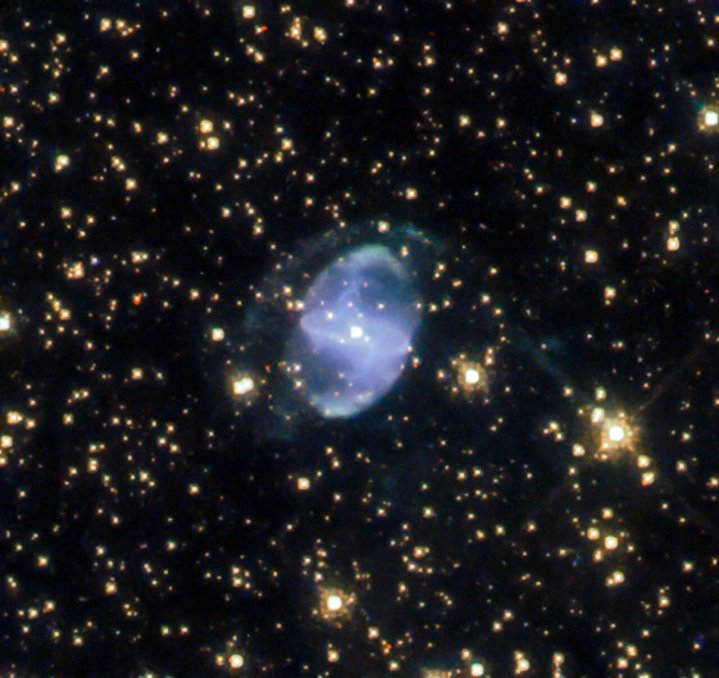
This week, the Hubble Space Telescope has captured yet another beautiful image of space: This time, planetary nebula ESO 455-10.
Despite their confusing name, planetary nebulae aren’t actually anything to do with planets. They were named that by early astronomers who saw vague shapes in the heavens and assumed they were planets of some kind. In fact, a planetary nebula is a shell of ionized gas.
When a star about the size of our sun comes to the end of its life, it throws off its outer layers which travel outward and form a shell. This shell is illuminated by the exposed core of the star, making the gas glow brightly. This is the planetary nebula.
But these lovely formations last only a relatively short time — a period in the tens of thousands of years — before dissipating.
This particular planetary nebula is of interest because of the way it interacts with the mostly empty space around it, called the interstellar medium.
“The oblate shells of ESO 455-10, previously held tightly together as layers of its central star, not only give this planetary nebula its unique appearance, but also offer information about the nebula,” NASA wrote in a post. “Seen in a field of stars, the distinct asymmetrical arc of material over the north side of the nebula is a clear sign of interactions between ESO 455-10 and the interstellar medium.”
Planetary nebulae interact with the interstellar medium by throwing off heavy elements like metals which are originally produced inside stars. These elements are seeded into the interstellar medium by the planetary nebulae, which helps to create the building blocks for new stars that will eventually be born.
Editors' Recommendations
- Celebrate Hubble’s 34th birthday with this gorgeous nebula image
- This beautiful nebula holds a starry mystery at its heart
- Hubble spies baby stars being born amid chaos of interacting galaxies
- Hubble spots an Earth-sized exoplanet just 22 light-years away
- James Webb snaps an image of the famous and beautiful Crab Nebula




